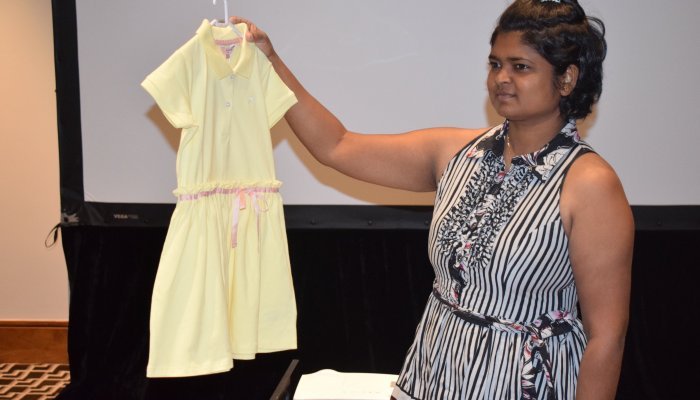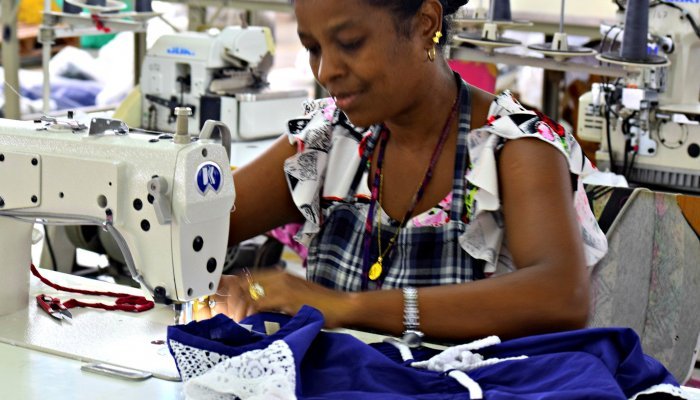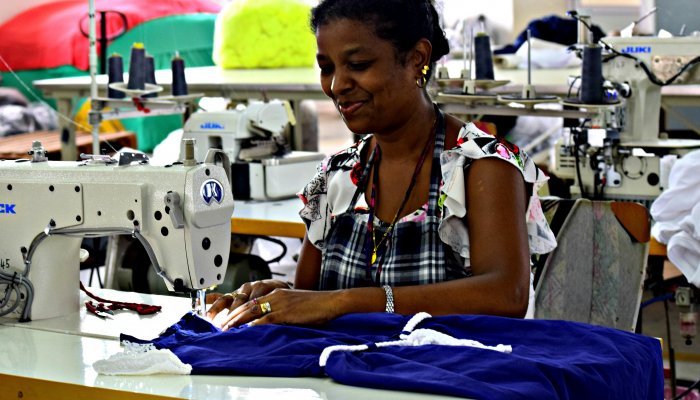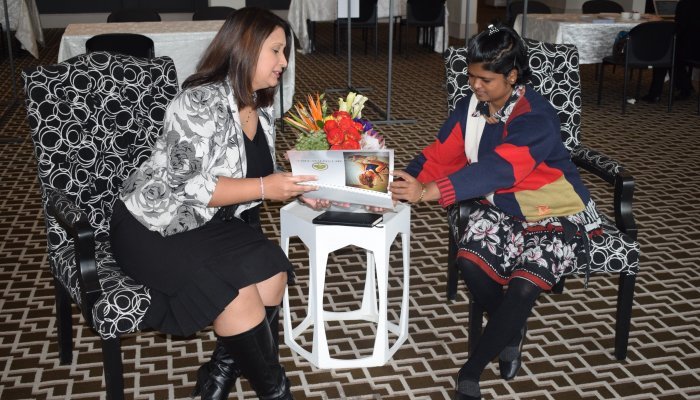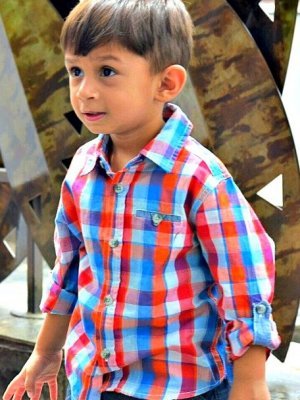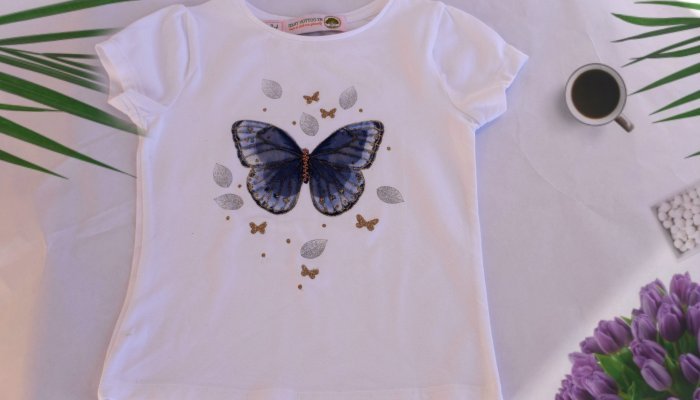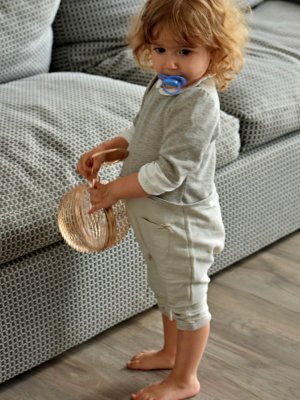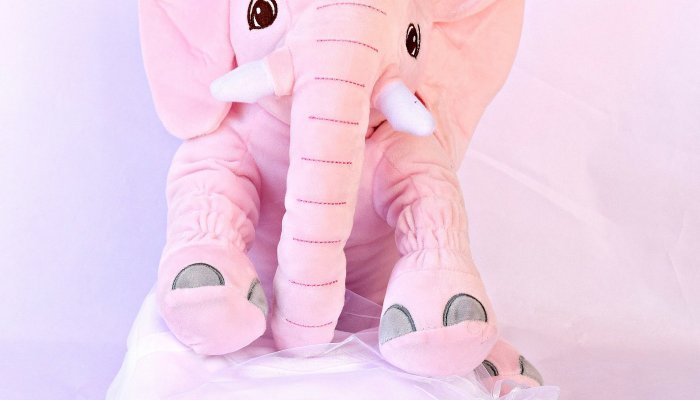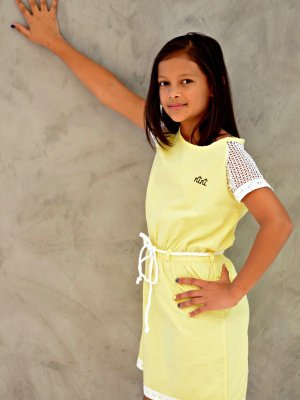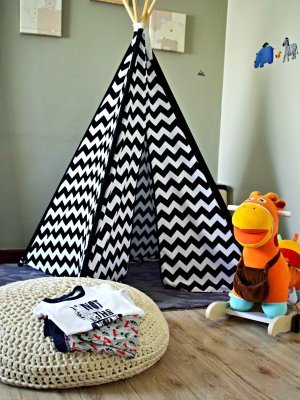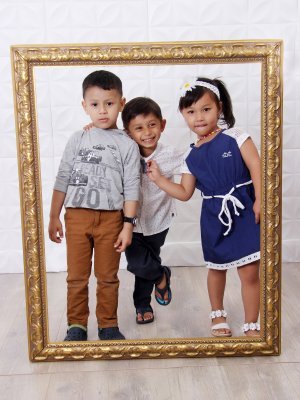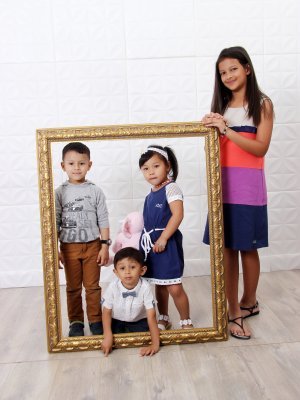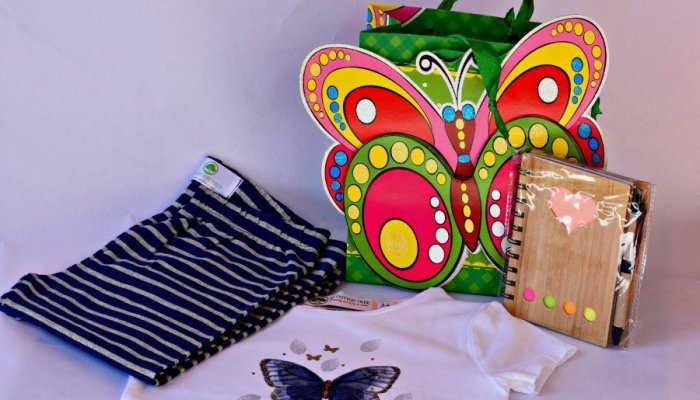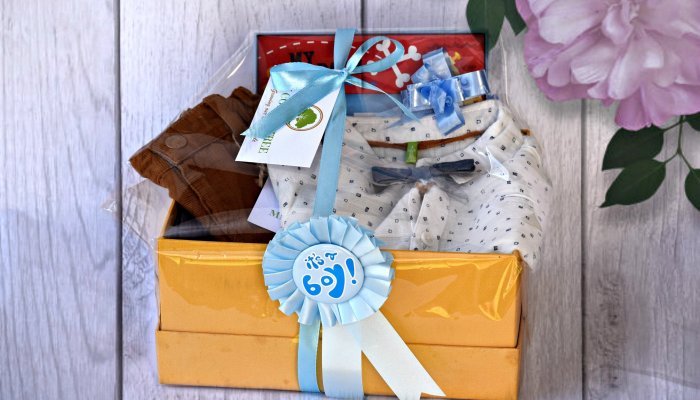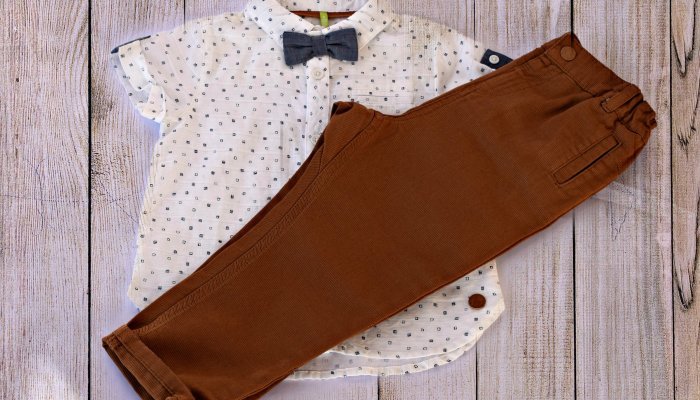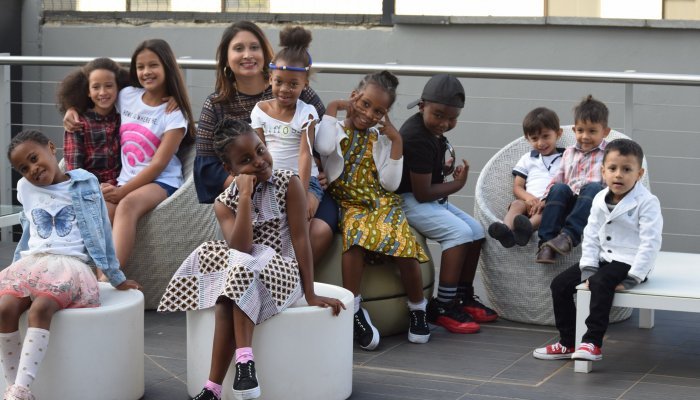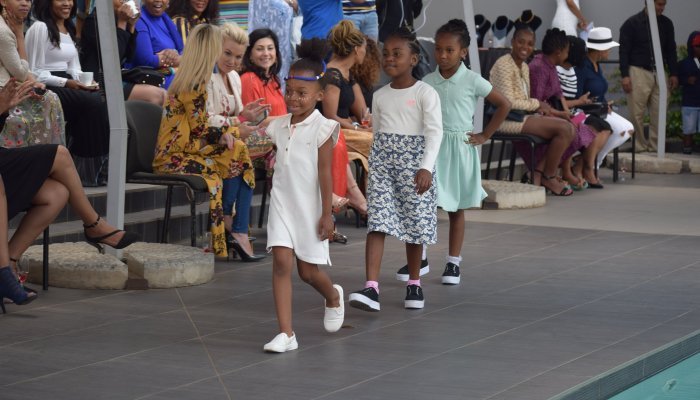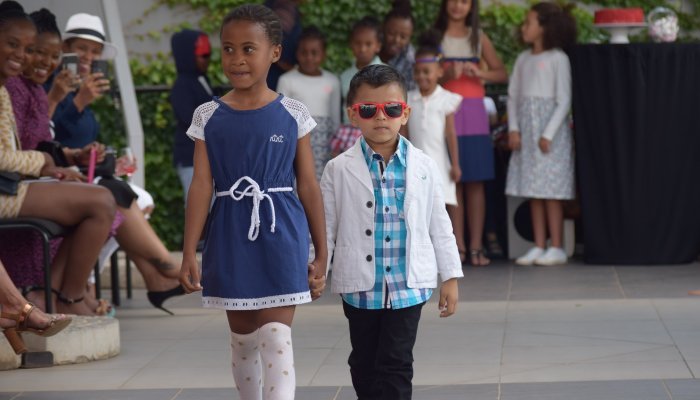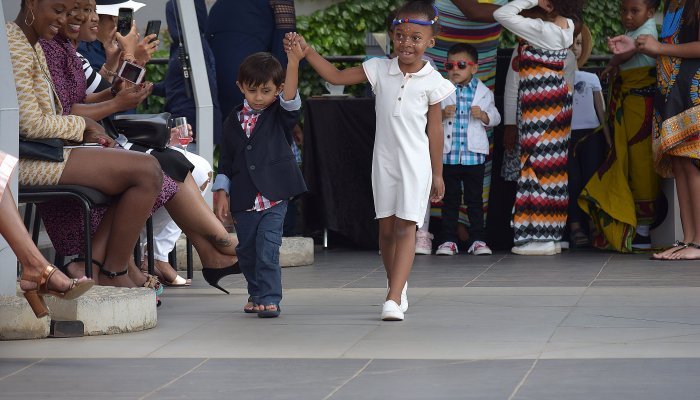Sandton City provided the backdrop for the launch of My Cotton Tree, a high-end children’s fashion label in November 2017. The afternoon high tea event was a small gathering of friends and family, celebrating Sharika Punwasi’s crossover into entrepreneurship. Over a year later, customers could walk into My Cotton Tree’s very first flagship store, in Sandton City’s sought after Nelson Mandela Square. It all started when Punwasi, a GIBS MBA graduate, became a mother four years ago. The self-confessed fashionista says at the time she was just trying to find the best and most fashionable threads for her son.
“All mothers want their kids to always look their best. But I was struggling to find locally made, good-quality cotton clothes at a reasonable price. Since children outgrow their clothes very quickly, I did not think it made sense to pay an exorbitant amount for outfits that were being worn for a few weeks at a time. I then went on this pursuit to find good cotton,” she says.
FINDING THE RIGHT COTTON
One day, by pure coincidence, Punwasi stumbled upon an article in The Economist about farmers in India’s cotton-producing state of Maharashtra. According to the read, the farmers were struggling financially and some were even committing suicide as a result. The former marketing executive explored the idea of doing business rescue. Many of the farmers had loans and debt of up to $1 000, so Punwasi thought it would be beneficial to all parties involved if they partnered with the farmers. And since India has a fledgeling manufacturing sector, she also considered having the clothes made in the South Asian country. Punwasi and her husband, who is also her business partner, advisor and benefactor, started making plans to pursue the farmers and actively seek plausible business partnerships. She soon discovered there were other factors at play that she needed to take into consideration.
“If we had chosen to import cotton from India, or manufacture from there, we would have had to contend with high import duties. It just didn't make sense to take that route, especially for a small start-up such as ours. We simply had to find another way,” she says.
DISCOVERING MAURITIUS
While on holiday in Mauritius in mid-2017, Punwasi found out about a manufacturing facility on the outskirts of the tiny African Island. She describes her first encounter with the space as love at first sight. “When I walked the floors they were manufacturing for the likes of Truworths, Naartjie and Orchestra from France. The designs were absolutely impeccable. The stitching, the workmanship, everything was so perfect. Plus Mauritius is a five-hour flight away from Johannesburg.”
Six months into her maternity leave she decided she was done with the nine to five.
The pieces of the puzzle were starting to fit together. Punwasi also discovered long-standing trade agreements within the Southern African Development Community. There are no duties or taxes on goods traded within the region. So her main production costs would be the manufacturing and the transportation of goods to South Africa. She also developed a great relationship with the factory owner, a young Mauritian businesswoman who has set up an efficient workshop with experienced cutters, seamstresses and garment makers. Punwasi and her sister oversee the design and development of the products and then hand over to the team in Mauritius that then produces the children’s clothing.
“I decided to make this a collaboration between the two countries and to capitalise on their individual strengths. South Africa has an advanced fashion market, world-class designers, and people who know how to expand a brand. While Mauritius has established itself as a manufacturing hub with many prominent international fashion labels being produced there. They just have this gift of manufacturing in a way that nobody else can,” she explains.
When she returned from her holiday, Punwasi brought back samples that eventually became the label’s first fashion line, unveiled at the launch party. At that gathering of friends and friends of friends in Sandton, My Cotton Tree was no longer just a plan on a drawing board. There was a rail of tangible children’s clothes bearing the brand logo. Pretty dresses with frills and ribbons, perfectly fitting golf shirts and shorts among others. The initial idea was to run the store online, in line with the demands of discerning modern customers. But she soon found out that the majority of her customers, the children, wanted to touch and feel the clothes. That’s when she went in pursuit of retail space.
GETTING OFF THE GROUND
Punwasi left her corporate job in finance and marketing in 2012 to study towards an MBA at GIBS. She enrolled in the management stream because she wanted to return to the corporate playing field, sharper and better skilled. Having worked for Unilever in trade marketing for many years, she had a good and solid foundation in creating strategies for brand development. She fell pregnant in the last year of her MBA but it was a difficult pregnancy, so she quit her job just before the baby’s arrival. Six months into her maternity leave she decided she was done with the nine to five. In those first few months, raising her son and struggling to find the right clothes, the idea of My Cotton Tree was born.
During her time at GIBS, one of the courses that really inspired Punwasi was Customer Centricity, taught by the prolific Professor Sandra Vandermerwe. “In that elective I learnt about adding value for the customer. When I was setting up My Cotton Tree, those lessons came in handy, especially in defining my customer profile. The mom is a key player, but if the child doesn't connect with the brand, it’s a fail. Ultimately it’s the child who’s going to pick out what they want to wear. The brand had to be centred on the child.”
My Cotton Tree is about fantasy – everything from the store layout to the labels and the visual presentations. The brand story centres on a fairy and a cotton wheel, which she uses to spin the cotton. As for the cotton tree, the label’s emblem, it goes with the whole theme of sustainability and caring for the planet. And to make the brand more personal, Punwasi added the 'My' to the name, so that the children, the people who wear the clothes, also feel like they are part of the story.
GROWING THE BRAND
The children’s fashion market in South Africa is highly saturated with many products on offer and plenty of retailers to choose from. But Punwasi is deliberate in making sure that she doesn’t mass produce. She wants the My Cotton Tree child to stand out from the rest. Even her expansion plan does not involve going toe to toe with the big retailers. She will only open retail outlets at key locations, targeting those customers who are in search of exclusivity. “I want to manage how I grow this company. There’s a very good children’s brand called Keedo. I am impressed with the way it has managed its portfolio in terms of having the reach, but still maintaining the quality and keeping the designs fresh,” she says.
She wants the My Cotton Tree child to stand out from the rest.
The next step for My Cotton Tree is to venture into the rest of the continent. Punwasi has tapped into the GIBS alumni network to secure business partners who will help her grow beyond the South African borders. My Cotton Tree products are already being sold in Botswana, with Namibia and Cameroon set to follow suit. The bigger plan is to entrench My Cotton Tree as an African brand and then take it to the rest of the world. Punwasi is eyeing the UK as the first overseas stop for her brand.
“Ever since my son was born, I see the world differently and I am inspired to do things differently. I spotted a gap in the market and now I am pursuing it with all that I have. I tested the idea with my immediate circle of friends and then got the confidence to scale, again and again, until now where I am simply looking forward to the next step in building a great South African brand, with an African footprint and then conquer the world,” Punwasi says confidently.
KEY LESSONS
CREATING NEW FRONTIERS
I have a vision of growing My Cotton Tree into a well-known and solid African brand. Especially since the rest of the world is looking to the continent for a point of difference. As African countries, we need to band together and capitalise on our individual strengths to build formidable industries. We have to work towards changing the narrative about the continent. If we want to compete with the likes of China, we should not be sitting in silos. We ought to be looking beyond borders and refrain from being insular.
LEARN HOW TO SPOT THE GAPS
During my MBA, one of our lecturers, Professor Adrian Saville, showed us a video about Muhammed Ali to illustrate the concepts of agility and absorption in the life of a business. The lesson was meant to sharpen our agility when opportunities arise. It was also a tool to make us aware of ways to absorb the pressures brought forth by various challenges. Building a business is no easy feat, and you need all the help you can get. I am grateful for that lesson.
TAKE A CHANCE ON YOURSELF
My husband has been my biggest supporter during this journey of building My Cotton Tree. There were many times when we would stay up until the early hours of the morning, refining my business idea. He believed in my vision so much that he even tapped into his savings to fund it. We both recognised the potential for My Cotton Tree to blossom into something special and magical. But most importantly, he believed in me. Knowing that he is in my corner, rooting for me, keeps me going.



